A Comprehensive Guide to Organic Pest Control
Are you tired of battling pesky insects in your garden? Do you want to maintain a thriving ecosystem without resorting to harmful chemicals? If so, you’ve come to the right place! This article explores effective organic pest control methods, highlighting their benefits, techniques, and best practices for maintaining a healthy, pest-free garden without the use of synthetic chemicals. Organic pest control is not just a trend; it’s a lifestyle choice that promotes sustainability and environmental health.
Understanding the significance of organic pest control is crucial for sustainable gardening. By opting for organic methods, you are not only protecting your plants but also contributing to the health of the environment. Traditional pest control methods often involve synthetic chemicals that can leach into the soil and waterways, causing long-term damage to ecosystems. In contrast, organic practices help to create a balanced ecosystem where beneficial insects can thrive alongside your plants. This approach also has health benefits for you and your family, reducing your exposure to harmful pesticides that can linger on fruits and vegetables.
When it comes to organic pest control, there are several methods you can employ to keep your garden healthy and vibrant. These methods include physical barriers, biological controls, and natural repellents. Each technique offers practical solutions for managing pests effectively without harming beneficial insects. Let’s dive deeper into some of these methods!
One of the simplest yet most effective ways to prevent pest infestations is by using physical barriers and traps. These methods not only protect your plants but also allow you to monitor pest populations. Here are a couple of techniques to consider:
Row covers are lightweight fabrics that shield your plants from pests while still allowing sunlight and moisture to reach them. They act as a protective blanket, keeping harmful insects at bay. By using row covers, you can create a microclimate that encourages healthy growth while deterring pests. To use them effectively, ensure that they are securely anchored to the ground to prevent any wind from lifting them away, and check for any signs of pests underneath regularly.
Sticky traps are an efficient way to monitor and control pest populations. These traps are coated with a sticky substance that captures insects that land on them. They are particularly useful for identifying which pests are present in your garden. Setting them up is easy; simply place them near affected plants, and check them regularly. Sticky traps can play a crucial role in integrated pest management strategies, helping you gauge the effectiveness of your pest control efforts.
Biological control involves using natural predators to manage pest populations. This method promotes a healthy balance in your garden by introducing beneficial insects that prey on pests. For instance, ladybugs and lacewings are excellent at controlling aphid populations. By creating an inviting environment for these beneficial insects—such as planting flowers that attract them—you can naturally reduce pest numbers without resorting to chemicals.
Natural repellents, such as essential oils and homemade sprays, can deter pests effectively. These methods are not only eco-friendly but also cost-effective. You can easily create your own organic pest deterrents at home with simple ingredients!
Essential oils are potent natural repellents that can protect your plants from pests. Oils like peppermint, neem, and lavender have been shown to repel a variety of insects. To use them, mix a few drops with water in a spray bottle and apply it to your plants. Not only will this keep pests away, but it will also leave your garden smelling delightful!
Creating homemade sprays using household ingredients can be an economical solution for pest issues. For example, a mixture of soap and water can suffocate soft-bodied insects like aphids. Here’s a simple recipe:
1. Mix 1 tablespoon of liquid soap with 1 quart of water. 2. Shake well and spray directly onto affected plants. 3. Reapply every few days until pests are controlled.
Implementing organic pest control requires planning and strategy. It’s not just about reacting to problems as they arise; it’s about creating a holistic approach to gardening. One effective method is crop rotation, which disrupts pest life cycles and minimizes infestations. Another strategy is companion planting, where you pair plants that benefit each other. For instance, planting marigolds alongside vegetables can deter nematodes and other pests.
Monitoring pest populations and evaluating the effectiveness of your control methods is vital for long-term success. Accurate pest identification is the first step in effective control. By recognizing common pests and understanding their behavior, you can tailor your strategies accordingly. Additionally, keeping detailed records of pest occurrences and control measures helps refine your approach over time.
- What is organic pest control? Organic pest control involves using natural methods to manage pests without synthetic chemicals.
- Are organic methods effective? Yes! Organic methods can be very effective when implemented correctly and consistently.
- How can I attract beneficial insects to my garden? Planting a variety of flowers and herbs can attract beneficial insects like ladybugs and lacewings.
- Can I use household items for pest control? Absolutely! Many household items, like soap and essential oils, can be used to create effective pest deterrents.

The Importance of Organic Pest Control
Understanding the significance of organic pest control is crucial for sustainable gardening. In a world where synthetic chemicals are often the go-to solution for pest problems, organic methods offer a refreshing alternative that not only protects your plants but also safeguards the environment. By choosing organic pest control, you contribute to a healthier ecosystem, ensuring that beneficial insects and wildlife thrive alongside your garden.
One of the most pressing concerns with conventional pest control methods is their environmental impact. Chemicals can leach into the soil and waterways, disrupting local ecosystems and harming non-target species. In contrast, organic pest control methods utilize natural substances and techniques, reducing the risk of environmental contamination. This is especially important in maintaining biodiversity, as many beneficial organisms play essential roles in pollination and pest management.
Moreover, the health benefits of organic gardening are significant. By avoiding synthetic pesticides, you reduce your exposure to harmful chemicals, which can have long-term health effects. Studies have shown that consuming produce grown with organic methods can lead to lower pesticide residues in your diet. This is particularly crucial for children and pregnant women, who are more vulnerable to the adverse effects of chemicals.
Organic practices also contribute to a balanced ecosystem. They promote soil health through the use of compost and natural fertilizers, which in turn supports robust plant growth. Healthy plants are less susceptible to pest infestations, creating a self-sustaining cycle. When you adopt organic pest control methods, you are not just solving a problem; you are fostering a thriving environment that can withstand pest pressures naturally.
In summary, the importance of organic pest control extends beyond mere pest management. It represents a holistic approach to gardening that prioritizes environmental health, personal well-being, and ecological balance. By embracing these methods, you are making a conscious choice to protect not only your garden but also the planet.
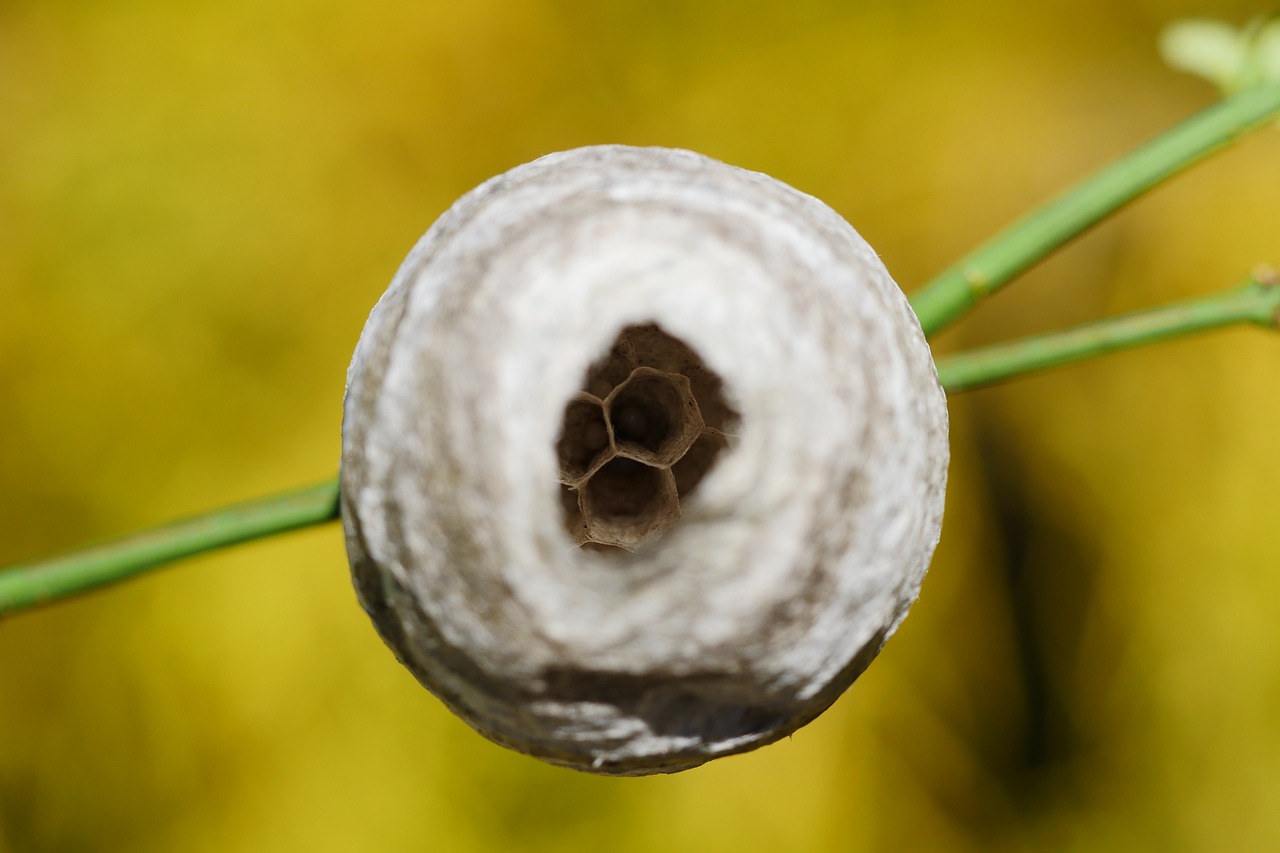
Common Organic Pest Control Methods
When it comes to maintaining a healthy garden, understanding is essential. These methods not only help in managing pests but also ensure that your garden remains a safe haven for beneficial insects and the environment. By adopting organic practices, you can create a sustainable ecosystem that thrives without the use of harsh synthetic chemicals. Let's dive into some effective techniques that can help you tackle pest problems head-on.
One of the simplest yet most effective ways to control pests is through the use of physical barriers and traps. These methods prevent pests from reaching your plants, allowing them to grow healthy and strong. For instance, row covers can be draped over your plants, creating a protective shield that keeps pests at bay while still letting sunlight and moisture through. Not only do they protect against insects, but they can also guard against harsh weather conditions.
Row covers are lightweight fabrics that serve as a barrier against pests. They are particularly beneficial for young plants, which are often the most vulnerable to attacks. When using row covers, it’s important to secure the edges properly to prevent pests from sneaking underneath. Additionally, these covers can help to extend the growing season by providing some insulation against cooler temperatures. Just remember to remove them during flowering to allow for pollination.
Another effective method is the use of sticky traps. These traps are designed to attract and catch flying insects, providing a clear indication of pest populations in your garden. Setting them up is easy; simply place them near affected plants or areas where you suspect pest activity. Not only do they help in monitoring pest populations, but they also play a crucial role in integrated pest management strategies by reducing the overall number of pests.
Biological control is a fascinating aspect of organic gardening that involves using natural predators to manage pest populations. By introducing beneficial insects like ladybugs or lacewings, you can create a natural balance in your garden. These predators feed on common pests such as aphids and spider mites, effectively keeping their populations in check without the need for chemical interventions. The key is to create an inviting habitat for these beneficial insects, ensuring they thrive and contribute to your garden's health.
In addition to physical barriers and biological controls, using natural repellents can be a game-changer in your organic pest control arsenal. Essential oils and homemade sprays are not only effective but also easy to make. For example, oils like peppermint and neem are known for their pest-repelling properties. You can create your own sprays by mixing these oils with water and a mild soap, providing a safe yet potent deterrent against unwanted pests.
Essential oils are like the superheroes of the pest control world. They are potent natural repellents that can protect your plants from a variety of pests. Popular oils include:
- Peppermint Oil: Effective against ants and spiders.
- Neem Oil: Works wonders against aphids and whiteflies.
- Lavender Oil: Deters moths and mosquitoes.
To use essential oils, simply dilute a few drops in water and spray directly onto the affected areas of your plants. This not only helps in repelling pests but also leaves your garden smelling delightful!
If you're looking for an economical solution for pest issues, making homemade sprays is a fantastic option. You can use common household ingredients to create effective pest control solutions. One popular recipe includes mixing water, a few drops of dish soap, and crushed garlic. This mixture can be sprayed on plants to deter pests like aphids and caterpillars. The soap helps the solution stick to the leaves while the garlic acts as a powerful repellent. It's easy, affordable, and you can feel good knowing exactly what’s going on your plants!
In conclusion, utilizing a combination of these organic pest control methods can lead to a thriving, pest-free garden. By embracing these techniques, you not only protect your plants but also contribute to a healthier ecosystem.
Q: Are organic pest control methods really effective?
A: Yes! Organic pest control methods can be highly effective when implemented correctly. They not only manage pest populations but also promote a healthier garden ecosystem.
Q: How often should I check for pests in my garden?
A: Regular monitoring is key. Check your plants at least once a week, and more frequently during peak growing seasons.
Q: Can I use organic methods in combination with chemical treatments?
A: It's best to avoid using chemical treatments alongside organic methods, as this can undermine the benefits of your organic practices. Focus on one approach for consistency and effectiveness.

Physical Barriers and Traps
When it comes to keeping your garden safe from pests, are your first line of defense. Imagine your garden as a fortress, where every plant is a precious treasure that needs protection. By implementing these simple yet effective methods, you can create a safe haven for your plants without resorting to harmful chemicals. These techniques not only help in preventing pest infestations but also allow beneficial insects to thrive, maintaining the delicate balance of your garden ecosystem.
One of the most popular methods of physical pest control is the use of row covers. These lightweight fabrics act like a protective shield, allowing sunlight and moisture to reach your plants while keeping pesky insects at bay. Think of row covers as a cozy blanket for your plants, providing warmth and security. They are particularly useful during the early stages of plant growth, where young seedlings are most vulnerable. To effectively use row covers, ensure they are securely anchored to the ground to prevent them from blowing away in the wind. Additionally, make sure to lift them periodically to allow for air circulation and prevent mold growth.
Another effective tool in your pest management arsenal is the use of sticky traps. These traps are like the proverbial flypaper—simple yet surprisingly effective. Sticky traps are designed to catch flying pests, such as aphids and whiteflies, while also helping you monitor pest populations. Setting them up is easy; just place them near the plants you want to protect, and watch as they do their job. Not only do they help in controlling pests, but they also provide valuable insight into the types of pests that are present in your garden. By assessing the number and types of pests caught on the traps, you can refine your pest management strategies.
Incorporating these physical barriers and traps into your gardening routine can significantly reduce the need for chemical interventions. They are eco-friendly solutions that align perfectly with the principles of organic gardening. However, it's essential to remember that while these methods are effective, they should be part of a broader integrated pest management strategy. Combining physical barriers with biological controls and natural repellents will give you a comprehensive approach to pest management, ensuring your garden remains healthy and thriving.
- What are the benefits of using physical barriers in pest control? Physical barriers are effective in preventing pests from reaching your plants, reducing the need for chemical pesticides, and protecting beneficial insects.
- How do I set up sticky traps? Place sticky traps near affected plants or areas where you suspect pest activity. Ensure they are visible and accessible to flying insects.
- Can row covers be used for all plants? While row covers are versatile, they are best used for tender crops and young seedlings. Be cautious with plants that require pollination, as row covers can inhibit this process.
- How often should I check my sticky traps? It's a good practice to check sticky traps weekly to monitor pest populations and replace them as needed.

Row Covers
Row covers are a gardener's secret weapon when it comes to protecting your precious plants from pests while still allowing them to bask in sunlight and absorb moisture. These lightweight fabrics act like a shield, creating a microclimate that can help your plants thrive, especially in the early stages of growth. Imagine them as cozy blankets for your garden, wrapping around your plants to keep them safe from the harsh elements and pesky critters that want to munch on them.
Using row covers is incredibly simple. You can drape them over your plants, securing the edges with soil or stakes to prevent them from blowing away. They come in various materials, including spun-bonded polyester and polypropylene, which are breathable yet effective at keeping out unwanted visitors. One of the best parts? They can be reused season after season, making them not just an effective solution but also an eco-friendly one!
When it comes to selecting the right row cover for your garden, consider the following factors:
- Thickness: Thinner covers provide less protection but allow more light and moisture through, ideal for early-season crops. Thicker covers offer better insulation and pest protection.
- Size: Ensure the cover is large enough to accommodate the growth of your plants without restricting their space.
- Material: Choose a breathable material that won’t trap heat excessively, which can cause stress to your plants.
In addition to pest protection, row covers can help extend your growing season. By trapping heat, they can create a warmer environment for your plants, which is particularly beneficial in cooler climates. This means you can start planting earlier in the spring and continue harvesting later into the fall.
However, it's essential to monitor your plants under row covers. While they provide excellent protection, they can also create a humid environment that may lead to fungal diseases if left unchecked. Make sure to lift the covers periodically to allow fresh air circulation, especially during warm spells. This balance is key to ensuring your plants remain healthy and productive.
In summary, row covers are a versatile and effective method for organic pest control. They not only protect your plants from pests but also enhance their growth and resilience. By incorporating row covers into your gardening practices, you're taking a significant step towards a healthier, more sustainable garden.
Q: Can I use row covers for all types of plants?
A: Yes, row covers can be used for a variety of plants, including vegetables, flowers, and herbs. Just ensure that the cover is appropriate for the specific needs of the plants you are growing.
Q: How do I know when to remove the row covers?
A: It's best to remove row covers when the danger of frost has passed and your plants are established enough to withstand pests without protection. Keep an eye on the weather and plant growth.
Q: Can I use row covers in the summer?
A: Yes, but be cautious. During hot summer days, it’s essential to lift or remove the covers periodically to prevent overheating and maintain proper air circulation around your plants.

Sticky Traps
Sticky traps are a fantastic, low-tech solution for managing pest populations in your garden. Not only are they easy to use, but they also provide a clear visual cue of pest activity. Imagine walking through your garden and spotting a bright yellow or blue trap, covered in unwelcome visitors. It’s a simple yet effective way to keep tabs on the pest situation without resorting to harmful chemicals!
These traps work by luring pests with color and scent, then ensnaring them on a sticky surface. They are particularly effective for flying insects like aphids, whiteflies, and fungus gnats. When placed strategically throughout your garden, sticky traps can help you monitor pest populations and determine when it’s time to take further action.
To set up sticky traps, follow these easy steps:
- Choose the Right Color: Yellow is particularly effective for many flying pests, while blue traps attract thrips. Consider using a combination of colors for broader coverage.
- Placement: Hang traps near plants that are prone to pest infestations, such as tomatoes or peppers. Make sure they are at the right height—typically around the same level as the plants.
- Monitor Regularly: Check your traps weekly to assess pest populations. This will help you determine if your pest control measures are working or if you need to adjust your strategy.
One of the best features of sticky traps is their role in integrated pest management (IPM). They not only help in identifying pest problems early but also assist in reducing the need for more invasive pest control methods. By keeping a close eye on the number of pests caught in your traps, you can make informed decisions about when to employ other organic methods, such as introducing beneficial insects or using natural repellents.
In summary, sticky traps are a practical and effective tool for organic pest control. They provide valuable insights into pest populations and can help you maintain a healthy garden ecosystem. Remember, the key to successful pest management is not just catching pests but understanding what’s happening in your garden. So, next time you’re out tending to your plants, don’t forget to check those sticky traps!
Q: How often should I check my sticky traps?
A: It's best to check your sticky traps at least once a week to monitor pest populations effectively.
Q: Can I make my own sticky traps?
A: Yes! You can create DIY sticky traps using cardboard and a non-toxic adhesive. Just paint the cardboard bright yellow or blue to attract pests.
Q: Are sticky traps harmful to beneficial insects?
A: Sticky traps primarily target flying pests. However, if placed carelessly, they can also catch beneficial insects. Be strategic about their placement to minimize this risk.
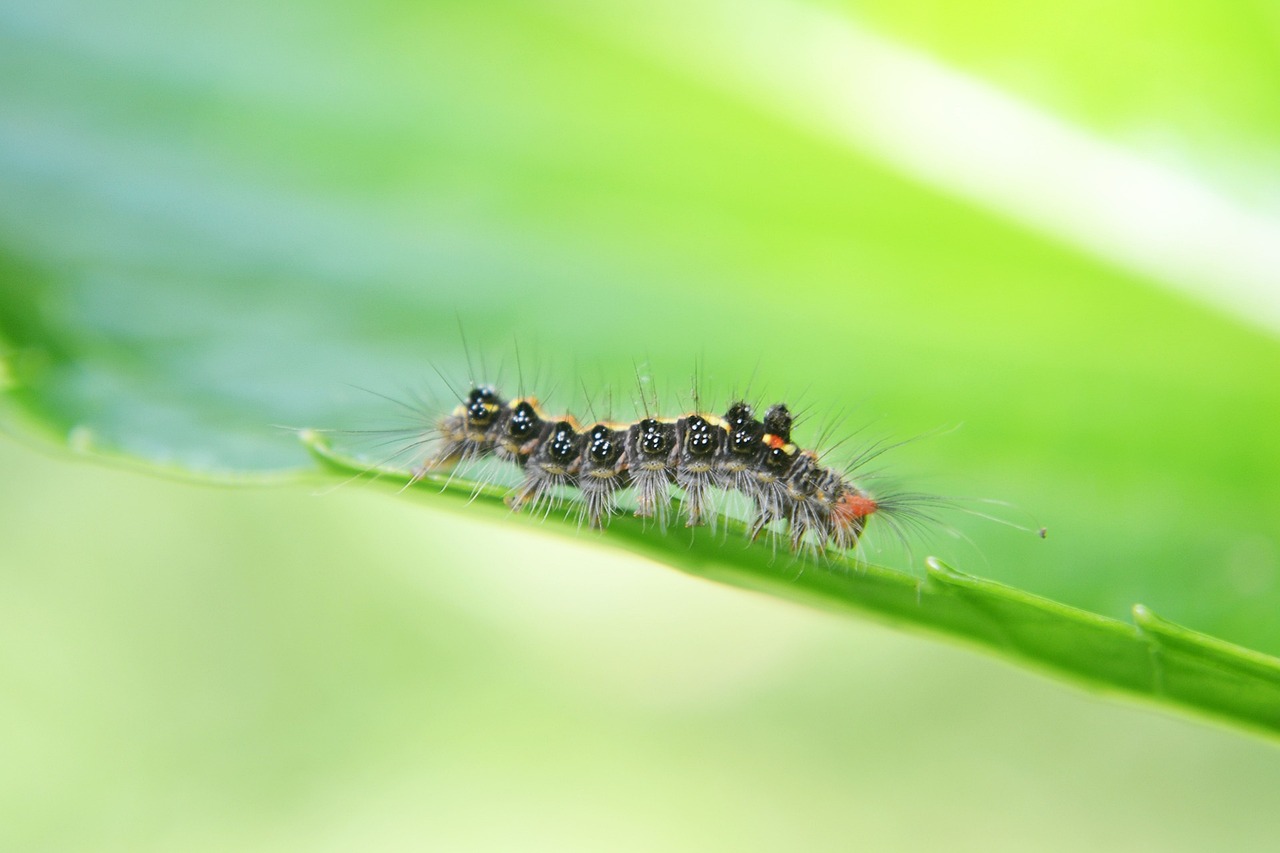
Biological Controls
This article explores effective organic pest control methods, highlighting their benefits, techniques, and best practices for maintaining a healthy, pest-free garden without the use of synthetic chemicals.
Understanding the significance of organic pest control is crucial for sustainable gardening. This section discusses environmental impacts, health benefits, and how organic practices contribute to a balanced ecosystem.
This section outlines various organic pest control methods, including physical barriers, biological controls, and natural repellents, providing practical solutions for managing pests effectively without harming beneficial insects.
Explore the use of physical barriers like row covers and traps to prevent pest infestations. These methods are simple yet effective in protecting plants from common garden pests.
Row covers are lightweight fabrics that shield plants from pests while allowing sunlight and moisture. This subsection discusses their benefits and how to use them effectively in your garden.
Sticky traps are an efficient way to monitor and control pest populations. This part explains how to set them up and their role in integrated pest management strategies.
Biological control is a fascinating and effective method of managing pest populations by utilizing the natural predators that exist in nature. Think of it as inviting a team of superheroes into your garden—each with a specific mission to combat the villains (pests) that threaten your plants. By introducing beneficial insects such as ladybugs, lacewings, and parasitic wasps, you can create a balanced ecosystem where these helpful allies keep harmful pests in check.
One of the best aspects of biological control is that it promotes a healthy garden environment. Unlike synthetic pesticides that can wreak havoc on beneficial insects and soil health, biological controls work in harmony with nature. For instance, ladybugs are voracious eaters of aphids, which are notorious for damaging plants. By encouraging ladybug populations in your garden, you can significantly reduce aphid numbers without resorting to chemical solutions.
Introducing biological controls can be as simple as planting flowers that attract these beneficial insects or purchasing them from a garden supply store. Here’s a quick table to illustrate some common beneficial insects and their preferred pests:
| Beneficial Insect | Pest Target |
|---|---|
| Ladybug | Aphids, mites |
| Lacewing | Aphids, caterpillars, mealybugs |
| Parasitic Wasp | Caterpillars, aphids, whiteflies |
To effectively implement biological controls, consider the following strategies:
- Habitat Enhancement: Create a welcoming environment for beneficial insects by planting a variety of flowering plants that bloom at different times throughout the growing season.
- Minimize Chemical Use: Avoid using synthetic pesticides in your garden, as these can kill both harmful and beneficial insects.
- Monitor Populations: Regularly check pest populations and the presence of beneficial insects to ensure a balanced ecosystem.
Incorporating biological controls into your pest management strategy not only helps in keeping your garden healthy but also contributes to the overall biodiversity of your local ecosystem. So, the next time you notice a pest problem, think about how you can invite nature’s own pest controllers to the rescue!
Natural repellents, such as essential oils and homemade sprays, can deter pests effectively. This section provides recipes and tips for creating your own organic pest deterrents at home.
Essential oils are potent natural repellents that can protect plants from pests. This subsection highlights popular oils and their application methods for effective pest control.
Creating homemade sprays using household ingredients can be an economical solution for pest issues. This part shares easy recipes for effective organic pest control sprays.
Implementing organic pest control requires planning and strategy. This section discusses how to incorporate these methods into your gardening routine for long-term success and sustainability.
Crop rotation is an essential practice for disrupting pest life cycles. This subsection explains how rotating crops can minimize pest problems and enhance soil health.
Companion planting involves pairing plants that benefit each other, deterring pests naturally. This part outlines effective combinations and their roles in organic pest management.
Monitoring pest populations and evaluating the effectiveness of control methods is vital. This section discusses tools and techniques for assessing pest management success in organic gardening.
Identifying pests accurately is the first step in effective control. This subsection provides tips on recognizing common pests and understanding their behavior for better management.
Keeping detailed records of pest occurrences and control measures helps refine strategies over time. This part emphasizes the importance of documentation in successful organic pest management.
Q: What are the benefits of using biological controls?
A: Biological controls promote a balanced ecosystem, reduce reliance on chemical pesticides, and can be more sustainable in the long run.
Q: How can I attract beneficial insects to my garden?
A: Planting a variety of flowering plants, providing water sources, and avoiding harmful pesticides can help attract beneficial insects.
Q: Are biological controls safe for pets and children?
A: Yes, biological controls are generally safe for pets and children since they use natural predators rather than synthetic chemicals.

Natural Repellents and Deterrents
When it comes to keeping pesky pests at bay, natural repellents and deterrents are game-changers for any organic gardener. Imagine your garden as a fortress, where you can use nature’s own arsenal to protect your precious plants without resorting to harsh chemicals. Not only are these methods safer for the environment, but they also promote a healthier ecosystem. So, what are some effective natural repellents, and how can you make them work for you?
One of the most popular and potent options is essential oils. These concentrated plant extracts are not just for aromatherapy; they can also serve as powerful pest deterrents. For instance, oils like peppermint, lavender, and eucalyptus are known to repel a variety of insects. You can easily create a simple spray by mixing a few drops of your chosen essential oil with water in a spray bottle. Just remember to shake it well before each use to ensure that the oil is evenly distributed. This spray can be applied directly to the plants or around the garden perimeter for maximum effect.
Another fantastic option is to whip up some homemade sprays using common household ingredients. These sprays can be both economical and effective. For example, a mixture of garlic and water can deter aphids and other soft-bodied insects. Simply blend a few cloves of garlic with water, strain the mixture, and spray it onto your plants. The strong odor of garlic is not only unpleasant for pests but also harmless to beneficial insects. Here’s a quick recipe for a basic homemade pest deterrent:
| Ingredients | Instructions |
|---|---|
| 1 cup of water | Blend with 2-3 cloves of garlic. |
| 1 teaspoon of dish soap | Mix with the garlic water to help it stick. |
| Spray bottle | Strain and pour the mixture into a spray bottle. |
Moreover, you can also use certain plants as natural repellents. For instance, planting marigolds around your vegetable garden can deter nematodes and other pests due to their strong scent. Similarly, herbs like basil and mint not only enhance your culinary dishes but also keep insects away. So, why not create a companion planting strategy that leverages these natural defenses?
Ultimately, integrating natural repellents and deterrents into your gardening routine is not just about keeping pests away; it’s about creating a harmonious environment where all elements work together. By utilizing these organic methods, you can maintain a vibrant garden that thrives without the need for synthetic chemicals. So the next time you spot a pest, remember that nature has provided you with plenty of tools to fight back!
- What are the benefits of using natural repellents? Natural repellents are safer for the environment, non-toxic to humans and pets, and help maintain a balanced ecosystem.
- How often should I apply homemade sprays? It's best to reapply every 1-2 weeks or after rain, as natural ingredients can wash away.
- Can I use essential oils directly on plants? It's advisable to dilute essential oils with water before applying them to plants to avoid any potential damage.

Essential Oils
When it comes to organic pest control, are like nature's little superheroes. These concentrated plant extracts are not only fragrant but also possess potent properties that can help keep pesky insects at bay. Think of essential oils as the aromatic bodyguards of your garden, warding off unwanted pests while being gentle on the environment. But how do they work, and which ones should you consider using?
Essential oils contain compounds that can disrupt the sensory receptors of insects, making them less likely to approach your plants. For example, oils like peppermint and eucalyptus have strong scents that many pests find overwhelming. It’s like inviting a friend over and blasting music so loud that they can’t think straight! By using these oils, you can create a barrier that deters pests without harming beneficial insects.
Here are some popular essential oils that you might want to consider for your pest control arsenal:
- Peppermint Oil: Effective against ants, spiders, and aphids. Its strong scent confuses and repels these pests.
- Lavender Oil: Not only does it smell delightful, but it also deters moths, fleas, and mosquitoes.
- Tea Tree Oil: Known for its antibacterial properties, it can also repel a variety of insects, including mosquitoes.
- Citrus Oils (like Lemon or Orange): These oils are great for repelling flies and other flying insects.
Using essential oils in your garden is simple and can be done in a few different ways. One effective method is to create a diluted spray. Mix a few drops of your chosen essential oil with water in a spray bottle. You can also add a small amount of natural soap to help the oil mix with water. Shake well before each use and spray directly onto plants, focusing on areas where pests tend to gather. Just remember to test a small area first to ensure your plants respond well to the mixture!
Another option is to use essential oils in a diffuser near your garden area. This method spreads the scent through the air, creating a protective cloud around your plants. It’s like creating a cozy, aromatic fortress that keeps pests at bay! However, be mindful of the concentrations; too much can overwhelm not only pests but also beneficial insects.
In conclusion, incorporating essential oils into your organic pest control strategy can be a game-changer. Not only are they effective, but they also add a pleasant fragrance to your gardening experience. Just remember to rotate the oils you use, as pests can become accustomed to a single scent over time. By keeping your garden smelling fresh and pest-free, you’ll be well on your way to achieving a thriving, healthy ecosystem.

Homemade Sprays
Creating your own for pest control is not only an economical solution but also a fun and rewarding experience. Imagine walking through your garden, knowing that you've crafted a potent blend of natural ingredients to keep those pesky pests at bay! The beauty of these sprays lies in their simplicity and effectiveness. With just a few household items, you can whip up a concoction that will protect your plants without the harmful effects of synthetic chemicals.
One of the most popular homemade sprays is a mixture of dish soap and water. This simple combination can target soft-bodied insects like aphids and spider mites. Just mix a few drops of dish soap with water in a spray bottle, and you’re ready to go! The soap works by suffocating the pests, disrupting their ability to breathe. It’s crucial, however, to test this spray on a small area of your plants first to ensure they won’t react adversely.
Another effective recipe involves using garlic. Garlic not only adds flavor to your meals but also serves as a powerful deterrent against a variety of pests. To create a garlic spray, blend a few cloves of garlic with water and let it steep overnight. Strain the mixture, add a teaspoon of dish soap, and voilà! You have a natural pest repellent that can be sprayed directly onto your plants. The strong scent of garlic confuses and repels many insects, making it a great ally in your organic gardening efforts.
For those who prefer a more aromatic approach, essential oils can be a fantastic addition to your homemade sprays. Oils such as peppermint, lavender, and tea tree oil are not only pleasant to smell but also effective in warding off unwanted guests. A simple recipe would be to mix a few drops of your chosen essential oil with water and a bit of dish soap. This mixture not only deters pests but also leaves your garden smelling delightful!
Here’s a quick reference table summarizing some effective homemade spray recipes:
| Ingredients | Purpose | Instructions |
|---|---|---|
| Dish Soap + Water | Targets aphids and spider mites | Mix a few drops of soap in water, spray on affected plants |
| Garlic + Water | Repels various pests | Blend garlic with water, steep overnight, strain, and spray |
| Essential Oils + Water | General pest repellent | Mix drops of essential oil with water and soap, spray on plants |
Using these homemade sprays not only helps in managing pest populations but also promotes a more sustainable approach to gardening. You’re harnessing the power of nature, and there’s something incredibly satisfying about that. Plus, it’s a great conversation starter when you share your gardening journey with friends and family!
Remember, the key to successful pest management is consistency. Regularly applying these sprays can help maintain a healthy garden ecosystem. As you experiment with different recipes, you’ll find what works best for your specific garden conditions. So, roll up your sleeves, get creative, and enjoy the process of protecting your plants naturally!
- How often should I apply homemade sprays? It’s best to apply them every week or after rain to ensure effectiveness.
- Can I use these sprays on all plants? Most homemade sprays are safe, but it's wise to test on a small area first.
- Are homemade sprays harmful to beneficial insects? Generally, they are less harmful than chemical pesticides, but be cautious and apply when beneficial insects are less active.
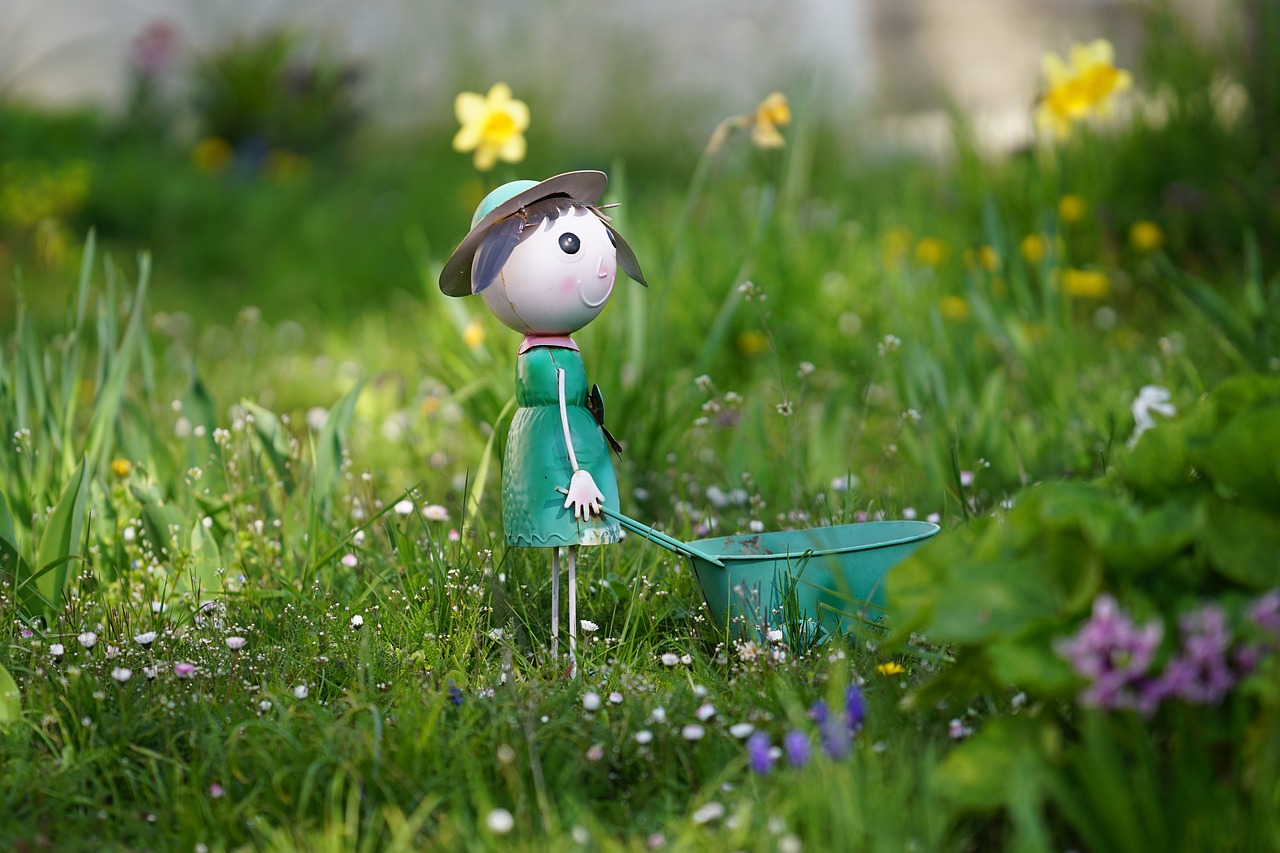
Integrating Organic Pest Control into Your Garden
When it comes to keeping your garden thriving and free from pests, integrating organic pest control practices is not just a choice; it's a necessity for sustainable gardening. Think of your garden as a living ecosystem, where every plant, insect, and microbe plays a vital role. By implementing organic pest control methods, you're not only protecting your plants but also nurturing a balanced environment that promotes biodiversity. So, how can you seamlessly weave these practices into your gardening routine? Let's dive in!
First and foremost, planning is essential. Before you even plant your seeds, consider how you can incorporate organic pest control strategies right from the get-go. For instance, crop rotation is a fantastic method that disrupts pest life cycles and reduces the chances of infestations. By rotating your crops each season, you can confuse pests that have become accustomed to specific plants. This simple yet effective strategy not only minimizes pest problems but also enhances soil health by preventing nutrient depletion.
Another effective strategy is companion planting. This involves pairing plants that benefit each other, creating a natural barrier against pests. For example, planting marigolds alongside tomatoes can deter nematodes and other harmful insects. It's like having your own little army of plant defenders! Here are a few popular companion planting combinations:
- Basil and Tomatoes: Basil repels tomato hornworms and aphids.
- Garlic and Roses: Garlic wards off aphids, spider mites, and other pests.
- Carrots and Onions: Onions help deter carrot flies.
Incorporating these methods requires a bit of foresight but pays off in the long run. It's like preparing for a big game—you wouldn't step onto the field without a strategy, right? Similarly, a well-thought-out plan for your garden will yield healthier plants and fewer pest issues.
Furthermore, don't forget about the importance of monitoring and adjusting your strategies. Regularly check your plants for signs of pests or disease. This proactive approach allows you to catch issues early before they escalate. Use tools like sticky traps or insect identification apps to keep track of pest populations and their behaviors. It's all about staying one step ahead!
Lastly, consider creating a pest management calendar to keep your organic pest control methods organized. Mark down when to rotate crops, when to apply natural repellents, and when to assess pest populations. This way, you can ensure you're consistently applying your strategies throughout the growing season.
In summary, integrating organic pest control into your garden is a holistic approach that requires planning, observation, and adaptability. By embracing practices like crop rotation and companion planting, you not only protect your plants but also foster a thriving ecosystem. So grab your gardening gloves, and let’s create a pest-free paradise together!
Q: What is organic pest control?
A: Organic pest control refers to methods of managing pests using natural processes and substances, avoiding synthetic chemicals to protect the environment and promote biodiversity.
Q: How effective is organic pest control compared to chemical methods?
A: While organic pest control may take more time and effort, it is often just as effective in managing pests, especially when combined with good gardening practices.
Q: Can I use organic pest control methods in my vegetable garden?
A: Absolutely! Organic pest control methods are ideal for vegetable gardens, ensuring that your produce remains chemical-free and safe for consumption.
Q: Are there any risks associated with organic pest control?
A: Generally, organic pest control methods pose fewer risks than synthetic chemicals. However, some natural substances can still cause allergic reactions or harm beneficial insects if not used properly.

Crop Rotation
Crop rotation is a vital practice in organic gardening that involves changing the type of crops grown in a particular area over different seasons. This method is not just a clever way to keep your garden interesting; it plays a significant role in disrupting pest life cycles and enhancing soil health. Imagine your garden as a stage where each plant plays a unique role. By rotating crops, you give each plant its moment in the spotlight while minimizing the chances of pests and diseases that thrive on specific plants. For instance, if you grow tomatoes in one plot this year, you might choose to plant carrots or beans in that same spot next year. This simple switch can confuse pests that have become accustomed to feasting on the same type of plant year after year.
One of the primary benefits of crop rotation is its ability to naturally control pest populations. Many pests are specific to certain plants, and by changing what you grow, you can significantly reduce their numbers. For example, if you had a problem with aphids on your cabbage, planting a different family of plants in that location the following season can help prevent a resurgence of the pest. Additionally, rotating crops can help mitigate soil nutrient depletion. Different plants have varying nutrient requirements, and by alternating them, you can maintain a more balanced soil nutrient profile.
To effectively implement crop rotation, consider the following tips:
- Group plants by family: Certain plant families are more susceptible to specific pests and diseases. Grouping plants that are less related can help reduce the risk of infestations.
- Plan your garden layout: Create a planting schedule that outlines what crops will be planted in each area for the upcoming seasons. This will help you stay organized and ensure that you’re rotating effectively.
- Keep records: Documenting what you plant and when can provide valuable insights into what works best in your garden. This will also help you avoid repeating the same crops in the same spots.
In conclusion, crop rotation is more than just a gardening technique; it's a holistic approach to creating a sustainable and thriving garden ecosystem. By understanding the relationships between different plants and their pests, you can cultivate a healthier environment that supports not only your crops but also beneficial insects and soil microorganisms. So, as you plan your next gardening season, remember that a little creativity in crop rotation can go a long way in keeping your garden flourishing.
1. What is crop rotation?
Crop rotation is the practice of alternating the types of crops grown in a specific area to improve soil health and reduce pest and disease problems.
2. How often should I rotate my crops?
It's generally recommended to rotate crops every year, but some gardeners may choose to rotate every few seasons depending on their specific gardening goals and pest pressures.
3. Can I plant the same type of crop in the same spot every year?
While it's possible, it's not advisable as it can lead to a buildup of pests and diseases that target that specific plant type.
4. What are the benefits of crop rotation?
Crop rotation helps in managing pests and diseases, improving soil fertility, and reducing soil erosion. It also promotes biodiversity in your garden.
5. Are there specific plants I should rotate together?
Yes, it's beneficial to group plants by family and rotate them accordingly. For instance, rotating legumes with leafy greens can enhance soil nitrogen levels while minimizing pest issues.
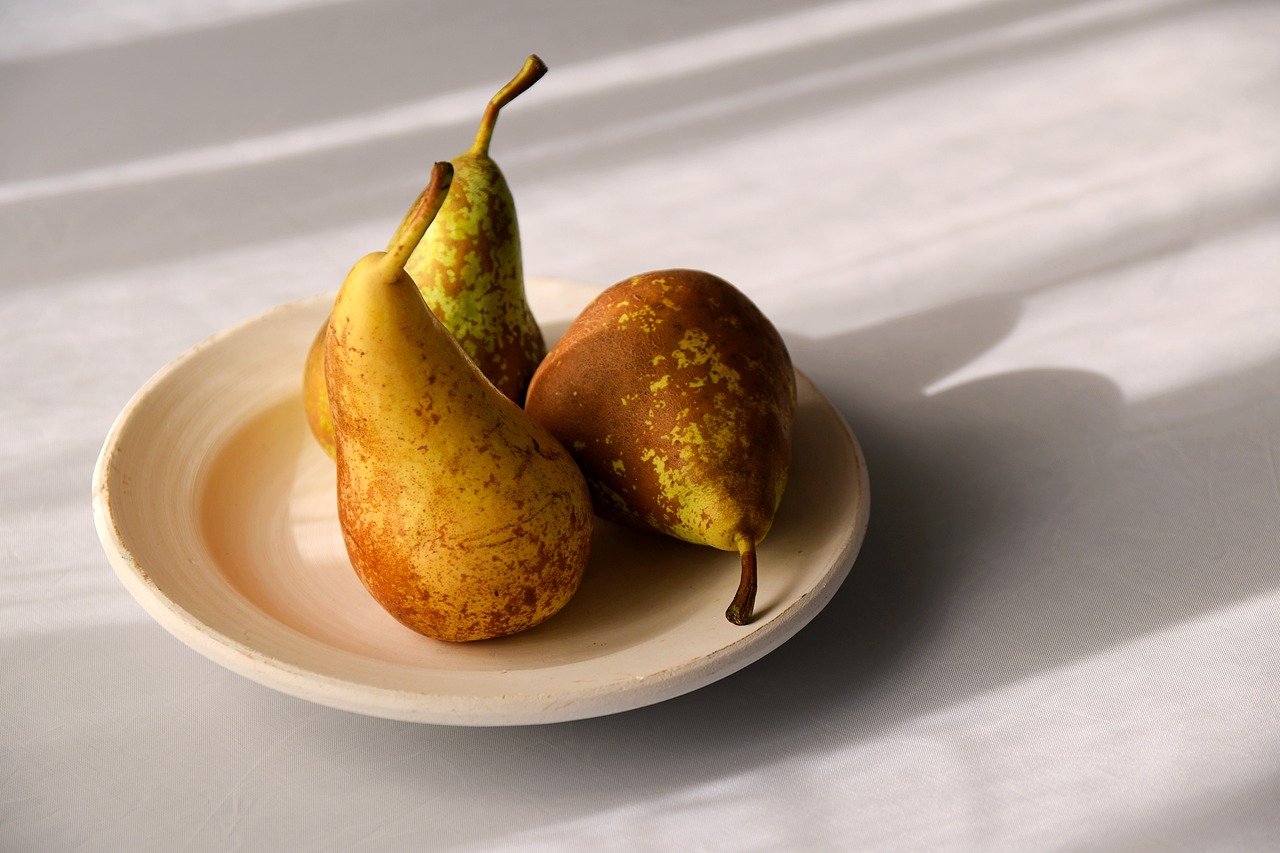
Companion Planting
Companion planting is like hosting a dinner party in your garden where each plant has a role to play. Just as some guests get along better than others, certain plants thrive when grown together, creating a harmonious environment that can naturally deter pests and enhance growth. This age-old practice not only maximizes space but also promotes biodiversity, which is essential for a healthy ecosystem. By pairing plants that complement each other's growth habits, gardeners can effectively manage pest populations without resorting to harmful chemicals.
One of the most famous examples of companion planting is the trio of corn, beans, and squash, often referred to as the "Three Sisters." Corn provides a natural support for climbing beans, while beans fix nitrogen in the soil, benefiting both themselves and the corn. Squash, with its broad leaves, acts as a living mulch, suppressing weeds and retaining soil moisture. This symbiotic relationship illustrates how plants can work together to create a thriving garden environment.
Moreover, certain plants can repel pests when planted near more vulnerable crops. For instance, marigolds are renowned for their ability to deter nematodes and other harmful insects. When strategically placed among vegetable beds, they can significantly reduce pest populations. Similarly, planting basil near tomatoes not only enhances the flavor of the tomatoes but also helps ward off aphids and whiteflies. The benefits of companion planting extend beyond pest control; they can also improve pollination and nutrient uptake.
To help you get started, here’s a quick reference table of some popular companion plants and their benefits:
| Plant | Companion | Benefit |
|---|---|---|
| Tomato | Basil | Repels aphids and enhances flavor |
| Cabbage | Mint | Deters cabbage moths |
| Carrot | Onion | Repels carrot flies |
| Beans | Corn | Provides support and improves soil nitrogen |
Incorporating companion planting into your garden isn't just about pest control; it's about creating a balanced ecosystem that thrives on diversity. As you plan your garden layout, consider how different plants can work together to support one another. Experimenting with various combinations can lead to surprising results, and over time, you'll discover which pairings work best in your unique gardening environment. So, get ready to mix and match, and watch your garden flourish!
Q: What is companion planting?
A: Companion planting is the practice of growing different plants together for mutual benefits, such as pest control, improved growth, and enhanced flavor.
Q: Can any plants be grown together?
A: Not all plants are compatible. Some can hinder each other's growth or attract pests. Researching plant pairings is essential for successful companion planting.
Q: How do I know which plants to pair?
A: Many resources are available, including gardening books and online databases, that provide information on beneficial plant pairings.
Q: Is companion planting effective for all types of pests?
A: While companion planting can deter many pests, it may not eliminate all pest problems. It's best used as part of an integrated pest management strategy.

Monitoring and Evaluating Pest Control Success
Monitoring and evaluating the success of your organic pest control methods is crucial for maintaining a healthy garden. Just like a coach reviews game footage to improve team performance, gardeners must keep a close eye on their plants and pest populations. By doing so, you can ensure that your pest management strategies are effective and make necessary adjustments when needed. So, how do you go about this? Let's dive in!
One of the first steps in monitoring pest control success is pest identification. Accurately identifying the pests in your garden allows you to understand their habits and life cycles. For instance, aphids and spider mites may require different control strategies. Familiarize yourself with common garden pests by observing their physical characteristics and behaviors. You can use resources like gardening books or online databases to help with identification.
Once you've identified the pests, it's time to observe their populations. Regularly checking your plants for signs of pest activity can help you gauge the effectiveness of your control methods. Look for:
- Visible pests on leaves and stems
- Damage to plants, such as holes or discoloration
- Presence of beneficial insects, which can indicate a balanced ecosystem
Another important aspect of monitoring is keeping detailed records. This is where record keeping comes into play. Documenting your pest occurrences, control measures taken, and their outcomes can help you refine your strategies over time. Consider creating a simple table to track this information:
| Date | Pest Identified | Control Method Used | Effectiveness (1-5) | Notes |
|---|---|---|---|---|
| 2023-10-01 | Aphids | Neem Oil Spray | 4 | Reduced population significantly |
| 2023-10-05 | Spider Mites | Introduce Ladybugs | 5 | Population controlled effectively |
In addition to keeping records, consider using tools like sticky traps or pheromone traps to monitor pest populations. These devices can provide valuable data on pest presence and help you assess whether your control methods are working. By regularly evaluating the number of pests caught in traps, you can make informed decisions about when to take further action.
Lastly, don't forget to evaluate the overall health of your plants. A thriving garden is often a sign that your pest management strategies are working. Healthy plants can better withstand pest pressure and recover from damage. Pay attention to plant growth, leaf color, and overall vigor as indicators of success.
Q: How often should I monitor my garden for pests?
A: It's best to check your garden at least once a week, but if you notice any signs of pest damage, increase your monitoring frequency.
Q: What should I do if I find a pest problem?
A: Identify the pest, assess the damage, and choose an appropriate organic control method. Keep detailed records of your findings and actions taken.
Q: Can I rely solely on natural predators for pest control?
A: While beneficial insects can help manage pest populations, it's important to have a comprehensive pest management strategy that includes monitoring and other control methods.
By staying vigilant and proactive in monitoring and evaluating your pest control success, you'll be well on your way to maintaining a healthy, thriving garden. Remember, gardening is a journey, and each step you take brings you closer to mastering the art of organic pest management.
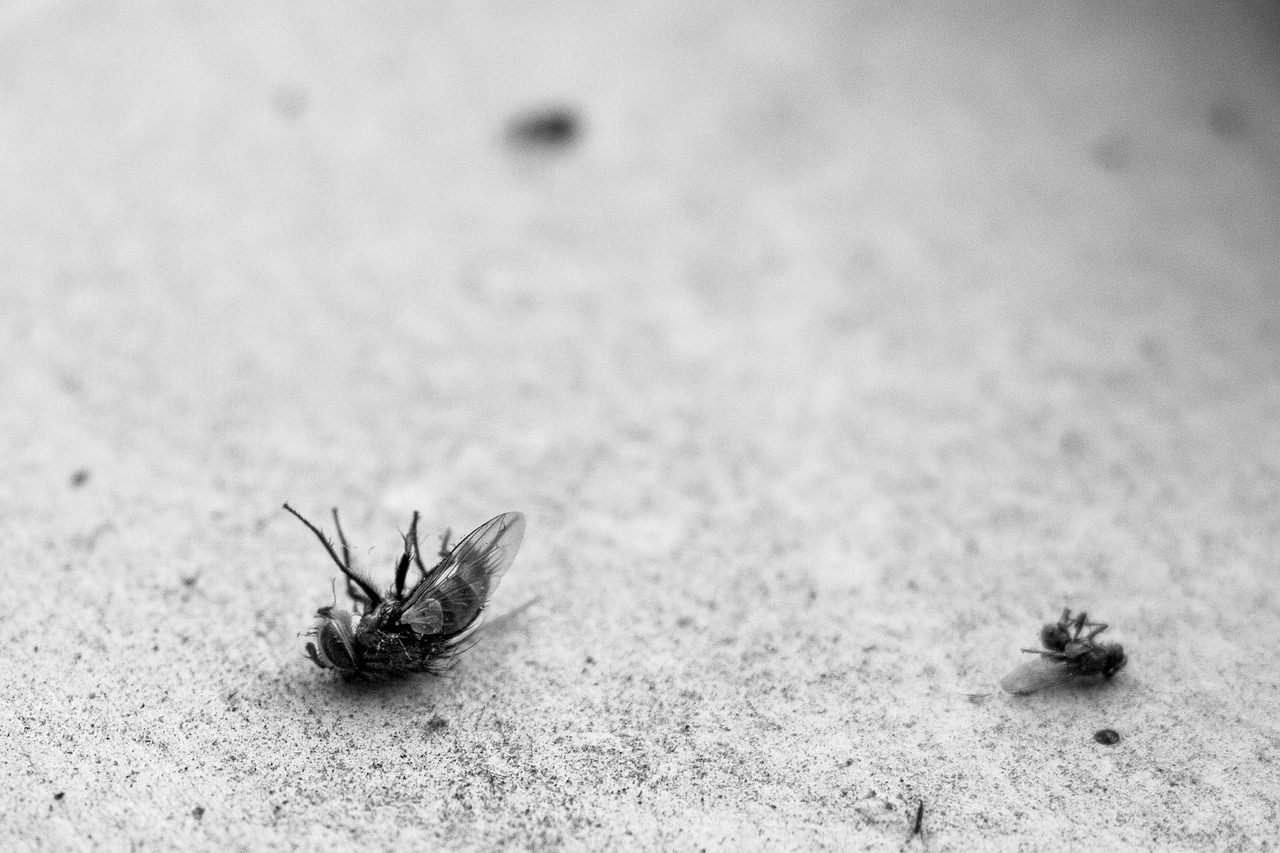
Pest Identification
Identifying pests in your garden is like being a detective on the hunt for clues; it’s essential for effective pest management. If you can’t identify the enemy, how can you devise a plan to defeat it? The first step in any organic pest control strategy is understanding what you’re dealing with. Are those little critters munching on your leaves aphids, or could they be harmless ladybugs? Knowing the difference can save your plants and your sanity.
Common garden pests can vary widely, from the tiny spider mites that suck the life out of your plants to larger creatures like rabbits that can wreak havoc overnight. Here are some tips to help you accurately identify pests:
- Observe the Damage: Look for the signs of pest activity. Chewed leaves, droppings, and webbing can indicate different pests. For instance, if you see tiny holes in your leaves, you might be dealing with caterpillars or beetles.
- Examine the Pests: Take a closer look at the insects themselves. Use a magnifying glass if necessary. Note their size, color, and any distinctive features. For example, aphids are small and often green or black, while spider mites are tiny and may leave fine webbing.
- Research Common Pests: Familiarize yourself with the common pests in your area. Local gardening clubs, extension services, and online resources can provide valuable information. Understanding the life cycle of pests can also help you anticipate when they might appear.
In addition to visual identification, you can also use traps to catch pests and observe their behavior. Sticky traps, for example, can help you identify flying insects like whiteflies or fungus gnats. By monitoring these traps regularly, you can track pest populations and take action before they become a significant problem.
Here’s a simple table to help you identify some common garden pests and their characteristics:
| Pest | Appearance | Damage | Control Method |
|---|---|---|---|
| Aphids | Small, pear-shaped, often green or black | Curled leaves, sticky residue | Introduce ladybugs or use insecticidal soap |
| Spider Mites | Tiny, red or brown, may leave webbing | Yellowing leaves, stippling | Increase humidity, use miticides |
| Whiteflies | Small, white, flying insects | Yellowing leaves, sooty mold | Use sticky traps, introduce parasitic wasps |
| Slugs and Snails | Soft-bodied, slimy, often nocturnal | Irregular holes in leaves | Handpicking, use of barriers like copper tape |
By taking the time to accurately identify pests, you can implement targeted control measures that are both effective and environmentally friendly. Remember, not all insects are harmful; some, like bees and ladybugs, are crucial for pollination and pest control. So, before you reach for the spray, make sure you know who you’re dealing with!
Q: How can I tell if a pest is harmful to my plants?
A: Look for signs of damage like chewed leaves, discoloration, or wilting. Research the specific pest to understand its behavior and impact on plants.
Q: Are there any natural methods to deter pests?
A: Yes! Methods like introducing beneficial insects, using essential oils, and creating homemade sprays can help deter pests without harming beneficial species.
Q: What should I do if I can’t identify a pest?
A: Consider reaching out to local gardening clubs, extension services, or online forums where experienced gardeners can help you identify the pest based on your description and photos.
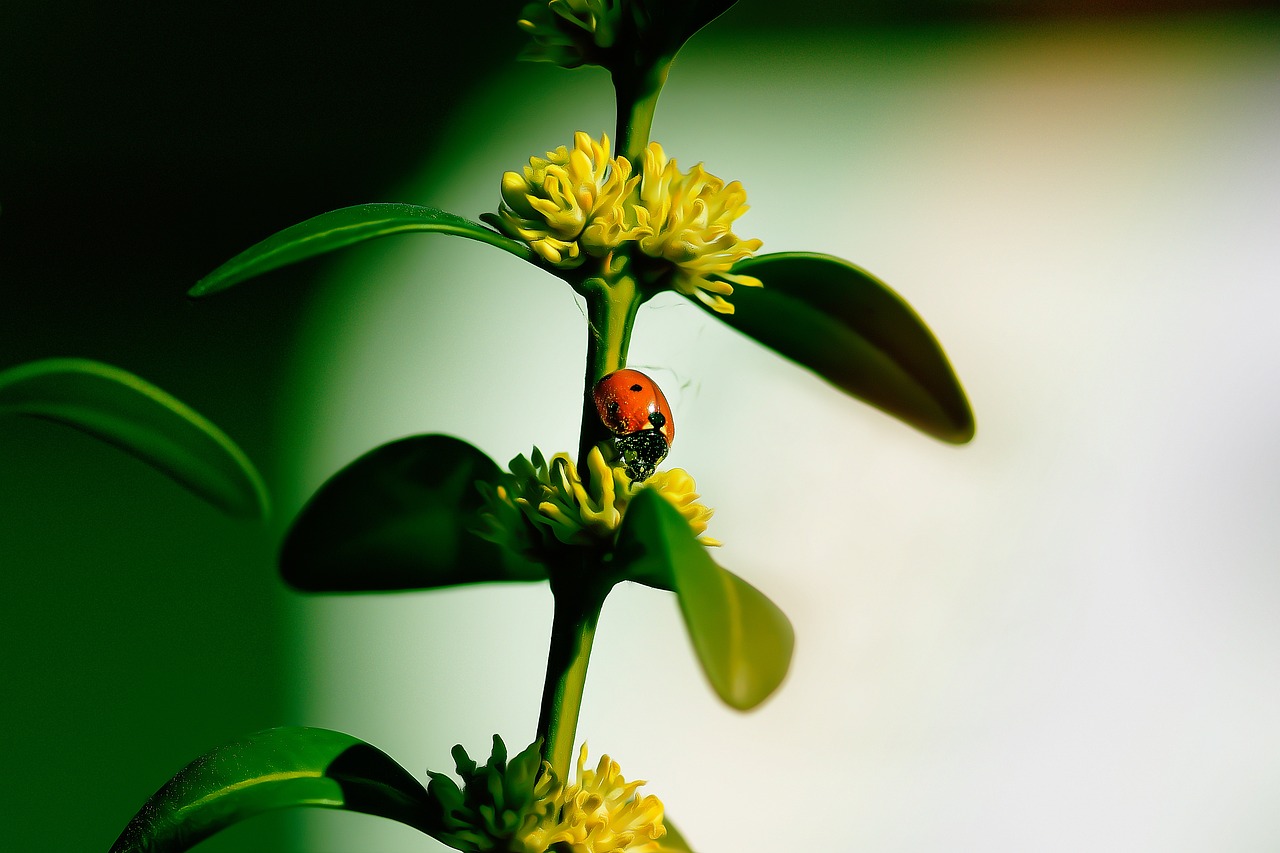
Record Keeping
When it comes to organic pest control, is not just a mundane task—it's a vital component of your gardening strategy. Think of it as your garden's diary, where every entry tells a story about what worked, what didn't, and how your plants are faring over time. By maintaining detailed records, you're not only able to track pest occurrences but also refine your control strategies, leading to a more vibrant and healthy garden.
Start by documenting the types of pests you encounter. Make note of their characteristics, behaviors, and the damage they cause. This can be as simple as jotting down a few observations in a notebook or using a garden management app. The more information you gather, the better equipped you'll be to tackle similar issues in the future. For example, if you notice aphids on your tomato plants in early June, you can anticipate their return next year and prepare accordingly.
Additionally, keep a record of the control methods you employ. Did you use a homemade garlic spray? How effective was it? Did you introduce ladybugs as a biological control? Documenting your methods and their results will help you understand what works best in your specific environment. You might even find that certain methods are more effective at specific times of the year, which can guide your future pest management strategies.
To make record keeping easier, consider using a simple table format. Here’s a sample layout you can adapt:
| Date | Pest Identified | Control Method Used | Effectiveness | Notes |
|---|---|---|---|---|
| June 5, 2023 | Aphids | Homemade Garlic Spray | Moderate | Reapply every week for best results |
| June 15, 2023 | Spider Mites | Introduce Ladybugs | High | Population decreased significantly |
By keeping a structured record like this, you can easily spot trends and make informed decisions about your pest control methods. Moreover, you can share your findings with fellow gardeners, contributing to a community of knowledge that helps everyone grow better gardens.
In essence, record keeping is not just about numbers and dates; it’s about creating a living document that evolves with your garden. This practice empowers you to become more proactive rather than reactive, allowing you to anticipate pest issues before they escalate. So grab that notebook or open that spreadsheet, and start documenting your journey toward a thriving, pest-free garden!
- What should I include in my pest control records?
Include the date, type of pest, control methods used, effectiveness, and any observations or notes.
- How often should I update my records?
Update your records regularly, ideally after each pest encounter or control method application.
- Can I use apps for record keeping?
Absolutely! There are many gardening apps available that can help you track pest occurrences and control methods easily.
Frequently Asked Questions
- What is organic pest control?
Organic pest control refers to the use of natural methods and substances to manage pest populations without relying on synthetic chemicals. This approach not only protects your garden but also the environment and your health.
- Why should I choose organic pest control over chemical methods?
Choosing organic pest control helps maintain a balanced ecosystem, reduces chemical exposure for you and your family, and promotes healthier soil and plants. Plus, it encourages biodiversity by protecting beneficial insects.
- What are some effective organic pest control methods?
Some effective organic pest control methods include using physical barriers like row covers, biological controls with beneficial insects, and natural repellents such as essential oils or homemade sprays. Each method has its unique benefits and can be tailored to your specific garden needs.
- How do row covers work?
Row covers are lightweight fabrics that protect plants from pests while allowing sunlight and moisture to penetrate. They create a physical barrier that can prevent insects from reaching your plants, making them an excellent tool for organic gardening.
- Can I make my own natural pest repellents?
Absolutely! You can create effective natural pest repellents using common household ingredients. For example, mixing water with essential oils like peppermint or neem oil can create a potent spray to deter unwanted pests.
- What is companion planting?
Companion planting involves pairing plants that support each other’s growth and help deter pests naturally. For instance, planting marigolds alongside vegetables can repel harmful insects while attracting beneficial ones.
- How can I monitor pest populations?
Monitoring pest populations can be done through regular garden inspections, using sticky traps, and keeping detailed records of pest occurrences. This helps you understand pest behavior and improve your control strategies over time.
- Is crop rotation really necessary for organic pest control?
Yes, crop rotation is essential! It disrupts pest life cycles by changing the types of plants grown in specific areas, which can reduce pest populations and improve soil health. This practice is a key component of sustainable gardening.



















